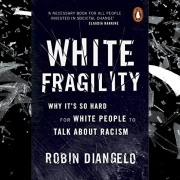Tag Archive for: rewire the brain
Exercises to Train Your Brain to Think, Feel & Behave Differently
/in Mindfulness/by Megan BartleyGreetings! Megan here.
We know the brain has plasticity, so we know we can shape and mold it. However, many of us don’t know what to do to see a difference.
Oftentimes we see things as black/white, good/bad, like/dislike, right/wrong which are limiting perspectives and keep us stuck in just two options. To increase our flexibility and make training the brain easier, we have to work on the brain’s flexibility and give our brain more options and perspectives from which to see our life and the world.
If you want to decrease your anxiety, anger, irritability, and depression, here are some specific exercises that help you create flexibility in the brain.
Create a Mind-Body Connection
First, focus on your 5 senses.
Take a minute or two, wherever you are, to focus on each sense and be as descriptive as possible. Naming and noticing while not judging (they aren’t good or bad; right or
wrong; they just are).
Sight: What are you seeing? Colors, textures, name the objects, just notice.
Smell: What are the smells around you? Do you smell the grass, flowers, stale
office furniture, someone’s lunch, your deodorant, or shampoo? Again, use your
adjectives: pungent, sour, sweet, stale, fresh, etc.
Taste: What are you tasting? Toothpaste? Coffee? Breath mint? Be descriptive:
Minty, tangy, sweet, bitter, etc.
Touch: What does it feel like in the chair you’re sitting in or on the floor/ground
you’re standing on? Is there a breeze? Warm sun on your face? What do the
clothes feel like on your skin? Tight, loose, itchy, soft, cozy, etc.
Hearing: What are you hearing inside this space (room, car, etc)? What are you
hearing outside of this space (next room, outside, down the street)?
Next, Count your breathing.
Count to 4 or 5 or 6 on each inhale and exhale for the same number. It
doesn’t matter what number you choose, one’s not better than another, just do what feels
best for you. Counting in and out for the same number is very balancing. As you do this
breathing work, notice the break in breath at the top of the breath and at the bottom where it feels like the breath is suspended for just a moment.
Set Boundaries
Know what you have control over and what you don’t have control over.
The easy answer is: You only have control over yourself. Your thoughts, feelings, and behaviors. Even if sometimes it feels like you don’t, you can learn how to do this. What you don’t have control over is anyone else – what they do, what they say, how they think, how they feel.
Awaken The Auto-Pilot and be Kind to Yourself (and Others!)
Notice your critical voice. We speak to ourselves, in our mind, with many different voices. Sometimes we’re very parental with ourselves and sometimes we are free and playful. Other times we can be very critical. If you have any sort of perfectionistic tendencies or are a bit Type-A, this may really resonate. When we begin to just notice (no need to try to change it) when we are speaking to ourselves critically we inherently change it. Just the sheer act of paying attention and noticing (without judgment) has the ability to change the issue at hand. And remember, don’t be critical of yourself being critical – just notice it for what it is and move on!
For ultra brain flexibility do a routine task differently.
-If you have “your spot” at the kitchen or dining room table, move to another spot at
each meal.
-If you have a morning routine in the bathroom, change it up. Brush your teeth first,
then take a shower, then floss your teeth.
-Soap up in the shower differently. If you usually start and your head, start at your feet.
Remember, there is no right or wrong, good or bad and we aren’t going for efficiency right now. We’re going for a change of perspective as well as flexibility of thinking and doing, which will help you change other, bigger, things if you want to! You’re building new neural pathways in your brain! Congrats!
I hope these insights are helpful! Let me know if you have any questions!
Beyond Buzzwords: White Fragility
/in Books/by Megan BartleyWhite Fragility is another wonderful book to read this Black History Month. The author Dr. Robin Diangelo has been teaching diversity training for 20 years. And she happens to teach at my alma mater, the University of Washington in Seattle. So cool!
Like Kendi, Diangelo speaks about her own discrimination and racism and the need for us all to consider important aspects of how we participate in racism even when our intention is to “not be racist” or even “antiracist.”
PLUS, through Metro United Way, Diangelo will be offering a “Beyond Buzzwords” event on February 23rd, 2021 from 12pm-1:15pm. Register HERE for FREE to attend!
Speaking of buzzwords, if you are noticing some phrases pop up that you aren’t familiar with, I encourage you to Google them and find out more. When we know better, we do better!
How To Be An Antiracist – February 2021 Monthly Book Giveaway
/in Books/by Megan Bartley #1 NEW YORK TIMES BESTSELLER • From the National Book Award–winning author of Stamped from the Beginning comes a “groundbreaking” (Time) approach to understanding and uprooting racism and inequality in our society—and in ourselves.
“The most courageous book to date on the problem of race in the Western mind.”—The New York Times
NAMED ONE OF THE BEST BOOKS OF THE YEAR BY The New York Times Book Review • Time • NPR • The Washington Post • Shelf Awareness • Library Journal • Publishers Weekly • Kirkus Reviews
I. Loved. This. Book.
And, to no surprise, I’m not the only one.
As a cis white woman (she/her/hers), I am fully aware that there is plenty I do not know about racism. And not only am I not an expert on racism, there is plenty I don’t know about sexism, agism, ablism, and other prejudices. I also recognize that I still participate in racism and other prejudices even when I believe I am consciously trying my best “Not To Be” racist or prejudice.
Author Ibrim X. Kendi brilliantly addresses the difference between “not being a racist” and being “antiracist.” He helps the reader understand that whether we like it or not, we are all participating in racism (even him!), even when we would consider ourselves “not racist.”
While this is a “how to” book, it’s also a wonderful narrative of Kendi’s life. Not only does he talk about his journey with racism and discrimination, but also with cancer. This book is a great “must read.”
Understanding Mindfulness
/in Mindfulness/by The Mindfulness CenterWritten by Bridgette Allen, MAMFT
The definition of mindfulness is simply paying attention to what is transpiring in the present moment, without judgment.
According to Jon Kabat-Zinn, renowned mindfulness teacher and researcher, mindfulness is also “a particular way of looking deeply inside to promote understanding and healing with an acceptance of what is.”
To fully understand mindfulness we must first recognize the importance of focusing on our breathing. Since our breath is always with us and easily accessible, following it anchors us in the present moment. It is our “friend” and regulator. When our mind wanders, and it will, we gently bring it back to our breathing and the present moment, without judgment.
In addition, our feelings about our mindfulness practice play an important role in the success of living “mindfully.”
Nine inter-related attitudinal factors form the foundation of mindfulness:
Non-judging: Learning to be an impartial witness to our own daily experiences. Not labeling them either good or bad, but just taking note of what they are now.
Patience: Understanding and accepting that things sometimes unfold in their own time and being open to each moment in the present.
Beginner’s Mind: Seeing afresh…looking at things as if for the first time with an unbiased view and a sense of curiosity.
Trust: Honoring ourselves and our feelings; believing in our own instincts.
Non-striving: Being in a state of non-doing and allowing ourselves to “be” without trying to change anything.
Acceptance: Coming to terms with what is and seeing things as they really are in the present.
Letting Go: Accepting things as they are with no attachment or expectation.
Kindness: Bringing compassion for ourselves as we are now without self-blame or criticism.
Curiosity: Noticing what is happening in the moment with our emotions, thoughts, and physical sensations.
As we cultivate these factors in our practice, they in turn strengthen mindfulness within ourselves and in our relationship with others.
Mindfulness can be practiced informally or formally.
Formal mindfulness practice involves setting aside a specific amount of time, usually thirty minutes or longer every day, to consciously “go inside” and be aware of what is sensed or felt in the body, using the breath as an anchor. This practice can include a sitting/walking meditation, body scan (systematic scan of body parts), or yoga session.
Informal mindfulness involves finding brief moments in everyday life to be present. Instead of multi-tasking or spending extended periods on automatic pilot, the focus is on one activity at a time, without distraction. Whatever your preference, practicing mindfulness can help reduce the amount of mindlessness you experience day to day.
Overthinking Things ALL THE TIME
/in Mindfulness, Stress/by Megan BartleyWritten by Megan Bayles Bartley, MAMFT, LMFT
Do you catch yourself constantly distracted by your thoughts? Are you consumed with thinking about things – how a situation will turn out, what someone might say, how you will respond, worrying about things that have not happened yet, etc? Do you get stuck in the same thought patterns? Do you get stuck not making decisions or taking action because you can’t stop weighing all the options? Can you remember the last time you felt really happy or really sad or really angry?
I like balance. If we are too lopsided one way – thinking too much for instance – it usually creates problems for us and those around us. What would it look like if we strive for a balance between THINKING, FEELING, & DOING? We think sometimes. We feel sometimes. We do (or take action) sometimes.
I bet we would find a relief from a lot of the dialog in our head, the worry we constantly feel, or the meaning we’ve made out of things that might not have any meaning at all.
Go ahead, give it a try!
Speaking Your Truth
/in Self Love/by The Mindfulness CenterWritten by Jennifer Komis, MAMFT, MDIV
I learn a lot from my 3-year-old niece. Last time she visited, she walked in and immediately said, “Do you have Popsicles?” When I said “no” (terrible aunt oversight), she looked at me point blank and said, “Well, you should get some.”
Such directness. Such self-assurance. She asked for what she wanted. And while her attitude is typical of a 3-year-old, she made me wonder on a deeper level how we lose this directness, this wildness. When do we stop asking for what we need? What causes us to get all “polite” and quiet and afraid to say things like, “I need this. I want this. I miss this, love this don’t like this.”
Many of us stop making these requests as adults.
We think staying quiet equates to “making things work” or “keeping the peace.” But does it?
For a very long time, I thought my messy parts were unacceptable. I thought the “in process” version of me needed to be hidden in order to be loved and accepted. And so I hid, and watched many of those around me do the same.
I was presenting to the world the image of a final product instead of the messy, always-becoming work in progress that I am, that we ALL are. And that was not helpful. If anything, it was destructive and furthering a lie that being all of ourselves is somehow not okay.
The world NEEDS us to be messy because it gives others permission to be messy too.
When we stop pretending we have it all together all the time, we meet each other in actual reality, which is complicated, beautiful, good, bad, scary, exciting, and so much more. We grow together in ways false facades don’t allow. Most importantly, we get real and know that we are loved precisely because of that realness.
Isn’t there still a voice inside of you that has something important to say, something that might make life more authentic and real? When we don’t share those words, we create a barrier.
How do we share our truth in a kind and direct way? How do we ask for what we need and hear others’ requests for what they need? It’s certainly not easy, but when we do it, when we begin to cross those bridges with ourselves and others, we find ourselves feeling closer, realer, and safer than we ever could have imagined. Be you. Be loving, be wild.
Trusting the Process and Your Heart
/in Mindfulness, Relationships, Self Love/by Megan Bartley
Written by Megan Bayles Bartley, MAMFT, LMFT
Trust is not easy.
When we are “trusting” something or someone, it assumes there is some uncertainty and we’re “having faith” or trusting something positive will happen. And typically, we don’t always love to feel uncertainty.
However, most of life is fairly uncertain. We think we know what’s going to happen but then we say, “Or I could get hit by a bus tomorrow!” However, do we really think we’ll get hit by a bus? No.
What this shows us is that even in the uncertainty and the possibility of getting hit by a bus, we TRUST that we likely won’t get hit by the bus and therefore are fairly calm with the uncertainty of what will happen tomorrow.
What is really happening psychologically when we do this is sending ourselves a subconscious message that we actually think good things are most likely to happen (we’ll be alive tomorrow) more so than the negative will happen (getting hit by the bus).
I love, love, love “The Law of Detachment” chapter in Deepak Chopra’s book The Seven Spiritual Laws of Success. He writes,
“In detachment lies the wisdom of uncertainty…in the wisdom of uncertainty lies the freedom from our past, from the known, which is the prison of past conditioning. And in our willingness to step into the unknown, the field of all possibilities, we surrender ourselves to the creative mind that orchestrates the dance of the universe.”
How poetic and reassuring; compassionate and wise. Calming even.
I wonder if you noticed how it spoke to your head or your heart, your thinking brain or your feeling brain, or both.
Or maybe you even felt the two, the thinking brain and the feeling brain, connect with each other in a way that left you feeling calm or some other positive emotion.
If not, give it another read and see what happens. Maybe something even more profound might happen. Maybe you’ll notice something come to you in a few days, a week, or even a month from now.
May we all be willing to step into the unknown; to allow ourselves the opportunity to see all the possibilities the universe has to offer.
You Are Enough
/in Self Love/by The Mindfulness CenterWritten by Jennifer Komis, MAMFT, MDIV
So often, we twist and turn to fit the molds of our culture’s making. We adjust our looks and our opinions to stay within lines that are rarely ever drawn, but somehow we know are there. We make life plans on autopilot with the goal of keeping up with the Joneses. But here’s the thing… are the Joneses even happy? Does anyone know? I have no idea, but my guess is they’re probably just tired.
Your birth was your invitation to be YOU.
And what a dramatic invitation that was! You fought your way pushing and screaming into this world with all of your uniqueness, complexity, fervor and passion. Remember that you? She/he is still there, ready to speak, ready to be enough just as she/he is, and ready to live a life that feels authentic down to your very bones. Find a quiet place and listen. Remember that, “you can’t hate your way into loving yourself.”
For many of us, “I’m not enough” is the painful mantra behind our fears. And for many of us, we came to this conclusion because of some life experience that left us feeling unaccepted or unloved just as we are. So we engage in a process of striving, running, racing, always pushing to earn that title of “good enough.”
But here’s the thing. YOU ARE. In this moment, with your scars, mistakes, big secrets, regrets, all of it, YOU ARE ENOUGH. Can you try that on for a day? Live in that truth for a day? See how it feels? What’s different? What’s scary? What’s refreshing?
Spread the good word: You, you, you, and you, all of us, are enough, just as we are.
5 Easy and Practical Ways to Calm Yourself During COVID-19
/in COVID-19/by The Mindfulness CenterWritten by Megan Bayles Bartley, MAMFT, LMFT
I think I have COVID-19! I’m having a hard time breathing, my chest feels tight, and I’m more tired than normal. Or perhaps it’s just my wonderful friend Anxiety, reminding me I’m still alive and kicking.
Here are five things you can do to welcome your friend, Calm, into your life during this time:
1. Blow out Birthday Candles!
Say what?! Yup! When you are holding your breath, you already have a breath of air in so you want to focus on your exhale. Forcefully blowing out air and squeezing every last bit of air out of your lungs invites your body to breathe a deep breath in on the inhale. Do this a few times and it feels wonderfully invigorating!
2. Get clear on what you have control over and what you don’t have control over.
The easy answer is: You don’t have any control over COVID19, you only have control over yourself. Your thoughts, feelings, and behaviors. Even if it sometimes feels like you don’t, you can learn how to do this. What you don’t have control over is anyone or anything else — what they do, what they say, how they think, how they feel, or how this whole pandemic plays out.
3. Focus on Your Five Senses
Take a moment, or two, wherever you are, to focus on each of your five senses — sight, hearing, taste, touch, and smell. Encourage yourself to find descriptive words for each sense you notice. Being curious and noticing counteracts the desire to judge or evaluate things. Allow what you notice to be just as it is without it being good or bad, right or wrong, you like it or don’t like it.















